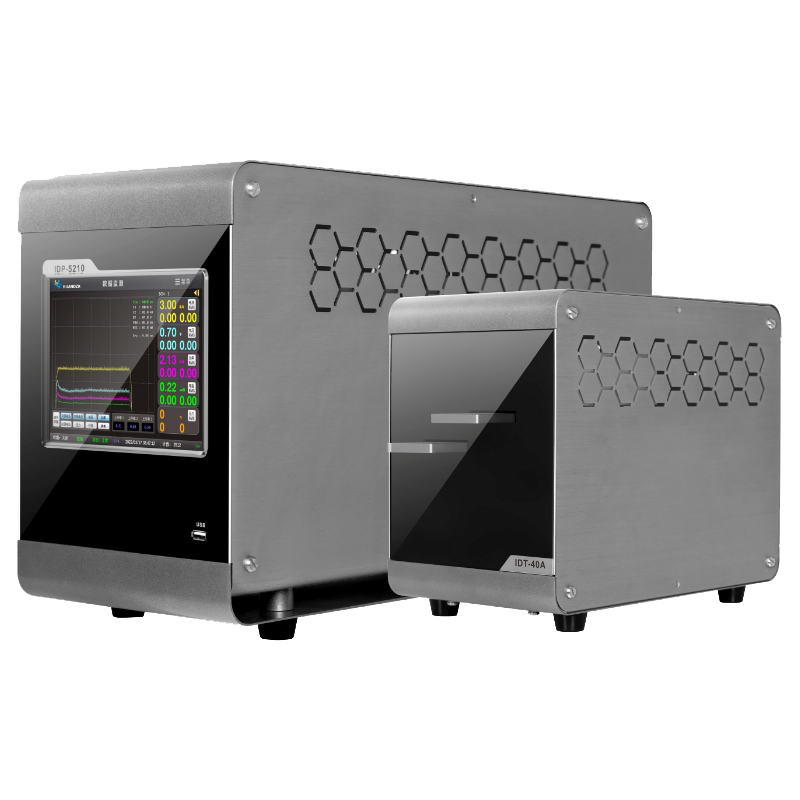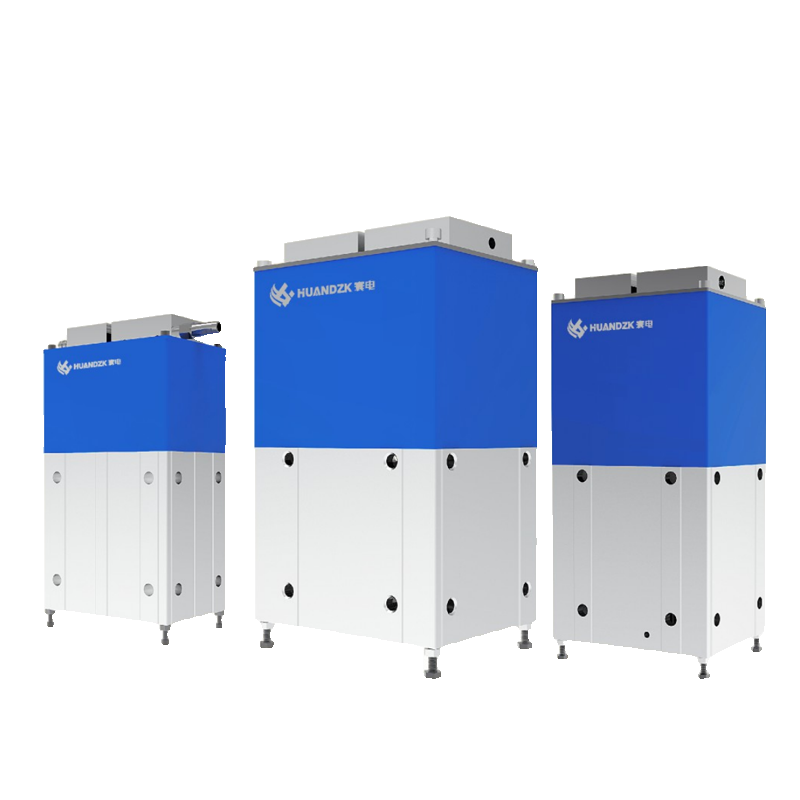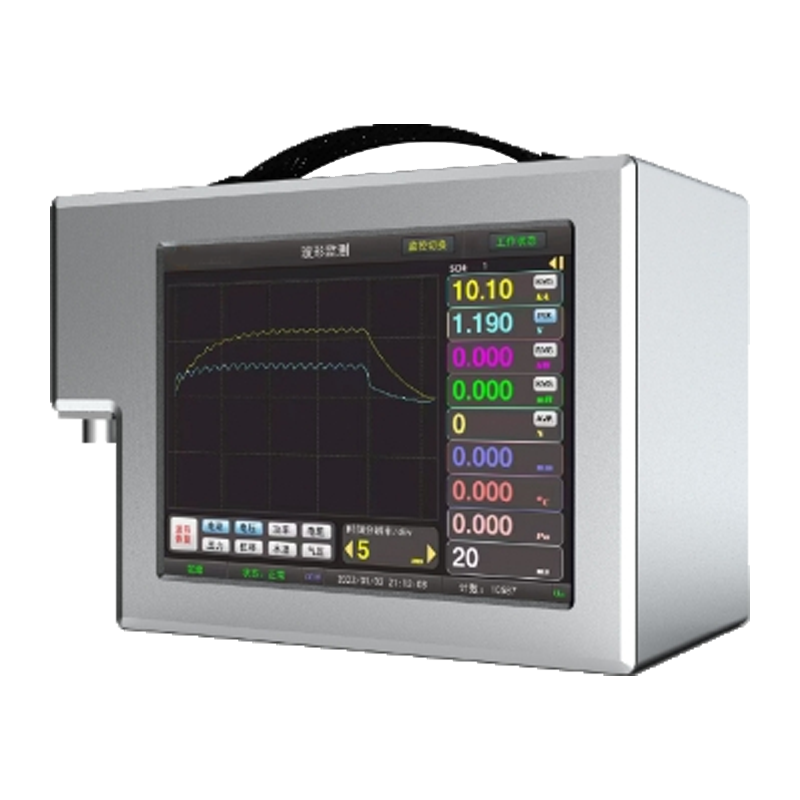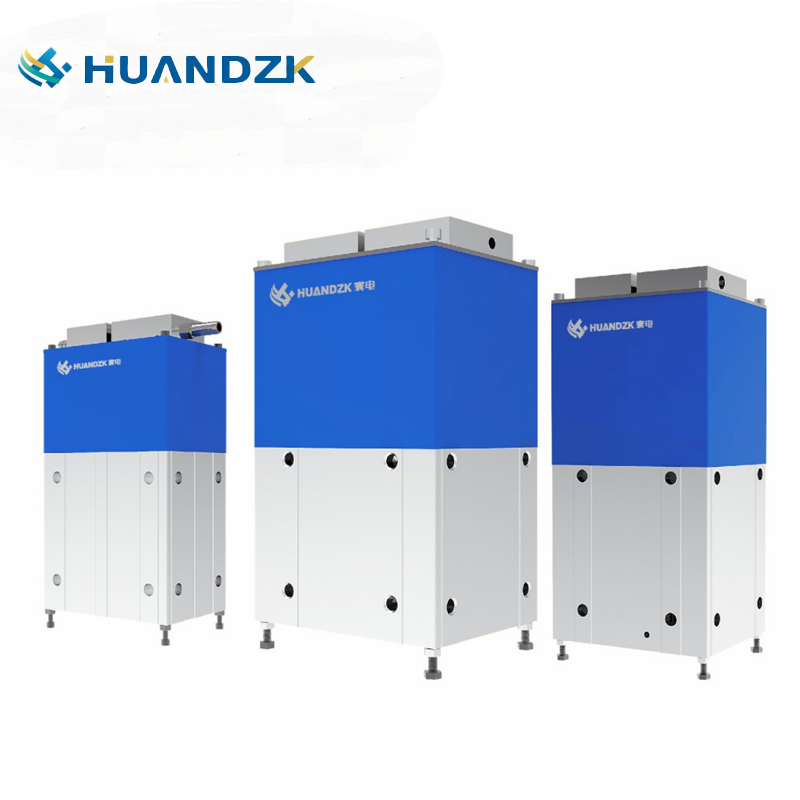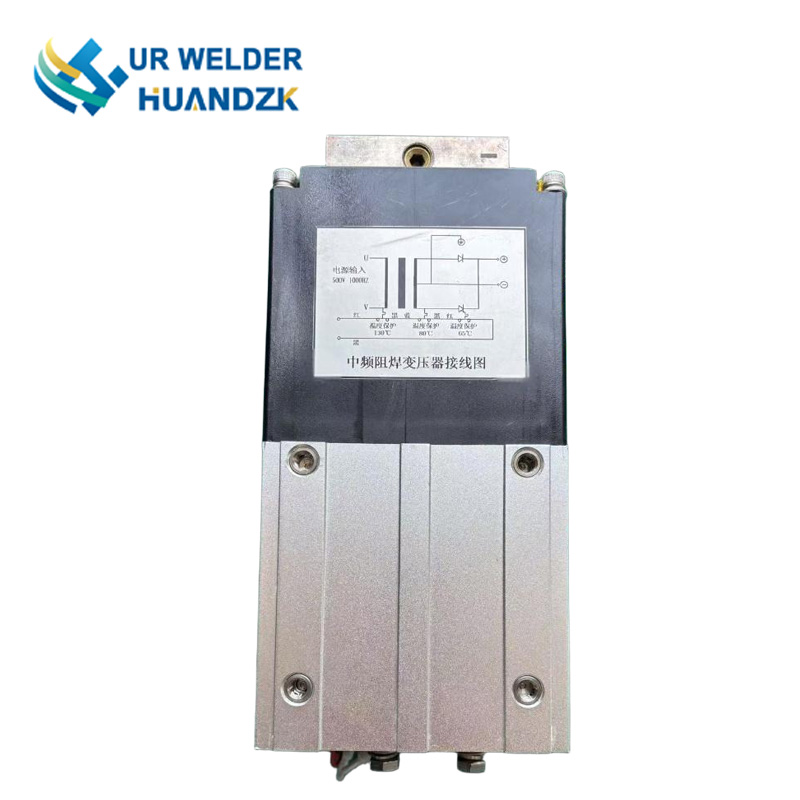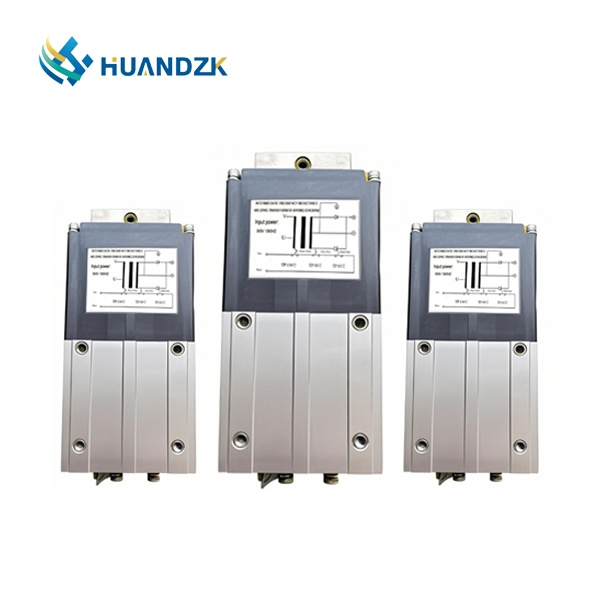A precision welding DC transformer operates through high-frequency pulse-width modulation (PWM) and transformer isolation to convert DC input into regulated DC output. Unlike traditional AC transformers, which rely on alternating magnetic flux, DC transformers use semiconductor switches (e.g., MOSFETs or IGBTs) to generate high-frequency AC pulses. These pulses are then rectified and filtered to produce stable DC voltage.
Key components include:
High-Frequency Core Materials: Nanocrystalline or amorphous iron cores minimize eddy current losses and hysteresis losses, critical for achieving >98% efficiency.
Primary/Secondary Windings: Litz wire reduces skin effect losses at high frequencies, while optimized turn ratios enable precise voltage regulation.
Control Circuitry: Digital signal processors (DSPs) adjust switching frequencies and duty cycles to maintain output stability under dynamic loads.
For example, a 3kW DC transformer for precision welding might use a full-bridge topology with a 50kHz switching frequency, reducing core volume by 60% compared to 50Hz AC transformers.
2. Applications in Precision Welding
Precision welding demands tight voltage control (±1%) and fast transient response to prevent arc instability. DC transformers excel here by isolating the welding circuit from input fluctuations and filtering out electrical noise.
Case Study: Automotive Body Welding
In robotic welding lines for electric vehicle (EV) chassis, DC transformers step down 48V battery voltages to 12–24V for micro-arc welding of thin aluminum sheets. Their compact size (e.g., 200mm × 150mm × 100mm) allows integration into robotic arms, while soft-switching techniques reduce electromagnetic interference (EMI).
3. High-Efficiency Design Strategies
To maximize efficiency, engineers focus on:
- Zero-Voltage Switching (ZVS): Eliminates switching losses by synchronizing MOSFET turn-on with zero voltage across the device.
- Leakage Inductance Optimization: Minimizing stray magnetic fields reduces energy dissipation and enables higher power density.
- Thermal Management: Liquid cooling or phase-change materials dissipate heat from high-current windings, maintaining core temperatures below 100°C.
A 2025 study by the Institute of Electrical Engineering (IEE) demonstrated that ZVS-enabled DC transformers achieved 99.1% peak efficiency in 10kW applications, outperforming conventional AC transformers by 15%.
4. Custom DC Transformer Solutions for Industry 4.0
Manufacturers now offer modular DC transformers with programmable output voltages (e.g., 12–48V adjustable in 0.1V increments) and IoT connectivity for remote monitoring. These units support Industry 4.0 initiatives by integrating with PLCs (programmable logic controllers) and cloud platforms for predictive maintenance.
Example: A German automotive supplier deployed smart DC transformers with CAN bus interfaces to synchronize welding parameters across 50 robotic stations, reducing downtime by 30%.
5. Future Trends: Wide-Bandgap Semiconductors
The adoption of gallium nitride (GaN) and silicon carbide (SiC) semiconductors is pushing DC transformers toward higher frequencies (100kHz–1MHz) and smaller form factors. GaN-based designs, for instance, reduce switching losses by 75% while enabling 50% smaller magnetics.
Market Projection: By 2030, GaN-powered DC transformers are expected to capture 40% of the $2.1 billion precision welding power supply market, driven by EV and aerospace demand.
Conclusion
Precision welding DC transformers represent a paradigm shift in power electronics, combining high efficiency, compactness, and digital intelligence to meet the demands of modern manufacturing. By leveraging advanced materials, circuit topologies, and Industry 4.0 integration, these devices are poised to dominate applications ranging from robotic welding to renewable energy systems. For manufacturers seeking custom DC transformer solutions, the future lies in scalable, software-defined architectures that balance performance with sustainability.
